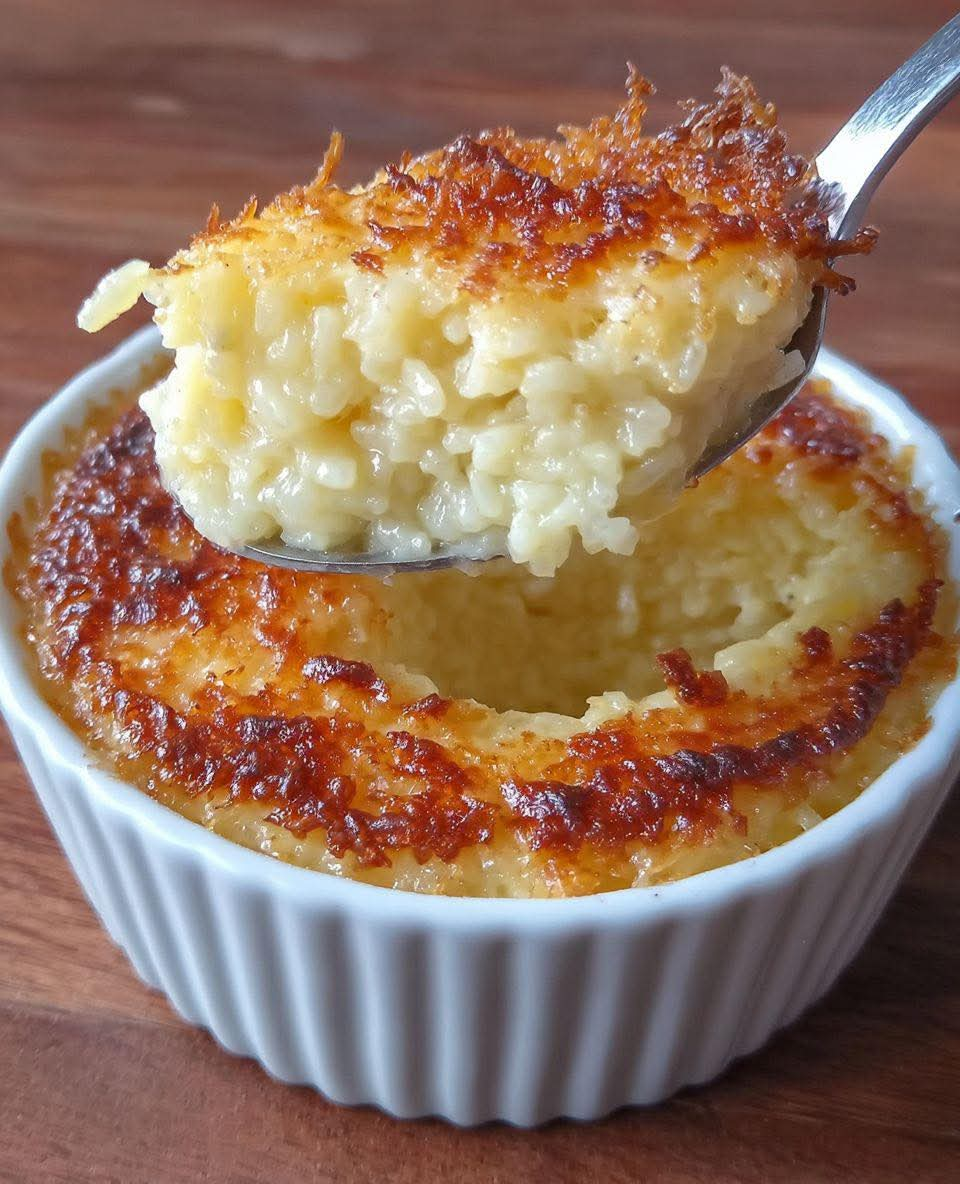⭐ Quick & Easy Old-Fashioned Rice Pudding in 30 Minutes
✨ Introduction
Old-fashioned rice pudding is one of those warm, nostalgic desserts that tastes like home. It’s creamy, lightly sweet, and scented with vanilla and cinnamon—a dish that feels comforting in every bite. This 30-minute version captures all the cozy flavors of the classic slow-cooked pudding, but in a fraction of the time. It’s perfect for weeknight desserts, breakfast treats, or serving guests when you want something simple but memorable.
🥣 Ingredients (Serves 4–6)
Base Pudding
- 1 cup cooked white rice (leftover rice works perfectly)
- 2 cups whole milk (or 1 ½ cups milk + ½ cup heavy cream for extra richness)
- ¼ cup sugar (adjust to taste)
- 1 large egg
- 1 tbsp butter
- 1 tsp vanilla extract
- ½ tsp cinnamon
- Pinch of salt
Optional Add-Ins
- ⅓ cup raisins or golden raisins
- Pinch of nutmeg
- Splash of rum/rum extract (optional)
- Fresh berries, toasted coconut, or a drizzle of honey for topping
🍳 Instructions (Step-by-Step)
- Warm the base:
In a medium saucepan over medium heat, combine the milk, cooked rice, sugar, butter, and salt. Stir gently and allow it to warm and thicken for 10 minutes. - Temper the egg:
In a small bowl, whisk the egg. Add a few spoonfuls of the warm mixture into the egg slowly, whisking constantly. This prevents curdling. - Combine:
Pour the tempered egg mixture back into the saucepan, stirring continuously. - Thicken:
Continue to simmer for 7–10 minutes, stirring often, until the pudding becomes creamy and thick. - Finish:
Remove from heat and stir in vanilla and cinnamon. Add raisins if desired. - Serve:
Spoon into bowls and enjoy warm, or chill for a thicker, spoon-standing texture.
🥄 Methods (Expanded Explanation)
1. The Simmering Method
This method gently cooks the rice and milk together, allowing the starch to release and create creaminess.
2. The Tempering Method
Tempering prevents eggs from scrambling. A small amount of heat is gradually introduced until the egg can safely join the hot mixture.
3. The Thickening Method
Slow simmering with frequent stirring helps evaporate excess liquid and encourages the natural starch to thicken the pudding.
4. Flavor-Infusion Method
Vanilla, butter, and cinnamon are added at the end to maintain their aromas and keep the flavors bright and warm.
📜 History
Rice pudding has roots stretching back thousands of years. Cultures across Asia, the Middle East, and Europe have their own versions—some dense, some soupy, some baked, some simmered. In the 1800s, it became a popular comfort food in Western households because rice and dairy were affordable, and the recipe needed only a stove and a pot. Today it remains a nostalgic dessert passed down through generations.
🏗 Formation (How the Dish Comes Together)
Rice pudding forms through a combination of starch release, gentle heat, and slow incorporation:
- Rice releases starch → thickens milk
- Egg enriches and binds the pudding
- Butter adds silkiness
- Sugar dissolves into the milk
- Spices bloom in the heat, giving aroma
- Cooling (optional) helps set the structure
The result: a creamy, velvety pudding with soft rice suspended in a thick custard-like base.
❤️ Lovers (Who Loves This Dish & Why)
- Grandparents who grew up with traditional homemade desserts.
- Busy parents who want something quick with pantry staples.
- Kids who love the warm, sweet, pudding-like texture.
- Comfort-seekers who crave nostalgic, soothing flavors.
- Food lovers who appreciate classic, simple, timeless desserts.
🔁 Methods (Second Appearance, As Requested)
- The quick-cook method: uses leftover rice to shorten cooking time.
- The custard method: integrates egg for richness.
- The stovetop-only method: avoids baking, making it truly a 30-minute dish.
💕 Lovers (Short Poetic Version, As Requested Again)
Rice pudding is loved by:
- those who treasure warm kitchens,
- those who seek sweetness in simplicity,
- those who taste memories in every spoonful.
🎉 Conclusion
This quick and easy old-fashioned rice pudding delivers all the warmth and nostalgia of a classic dessert—without long cooking times or complicated steps. Whether you serve it warm on a chilly evening or chilled on a summer afternoon, it’s a versatile, comforting recipe that brings joy to everyone who tastes it.
